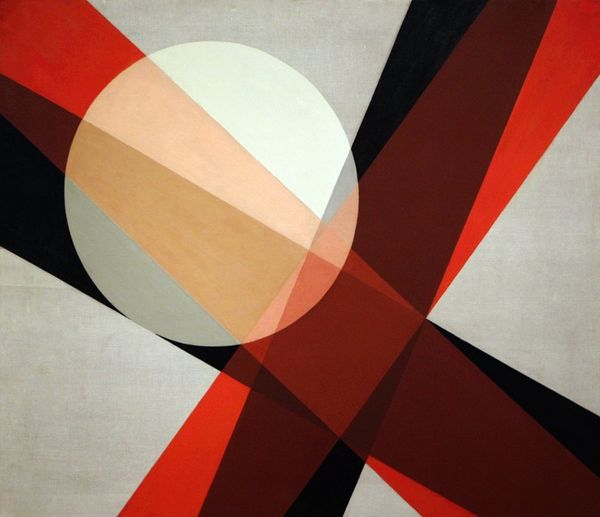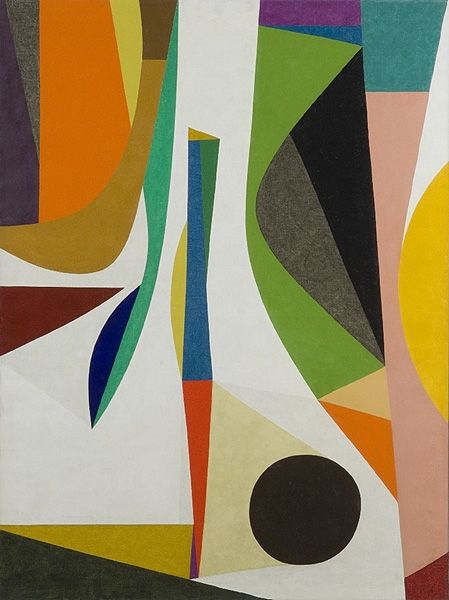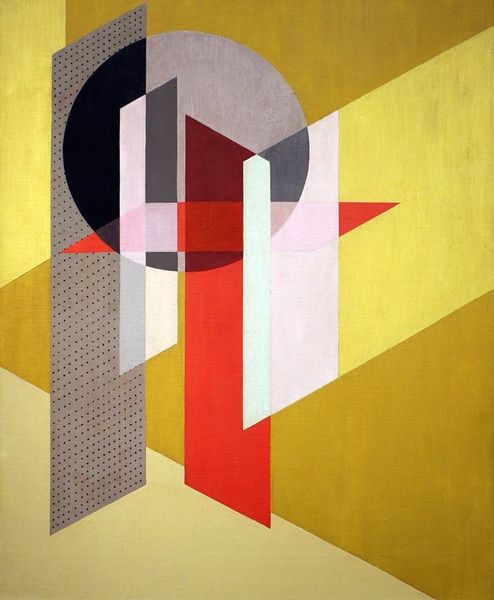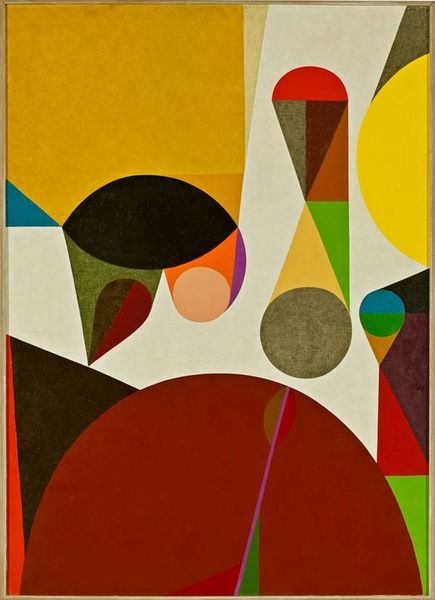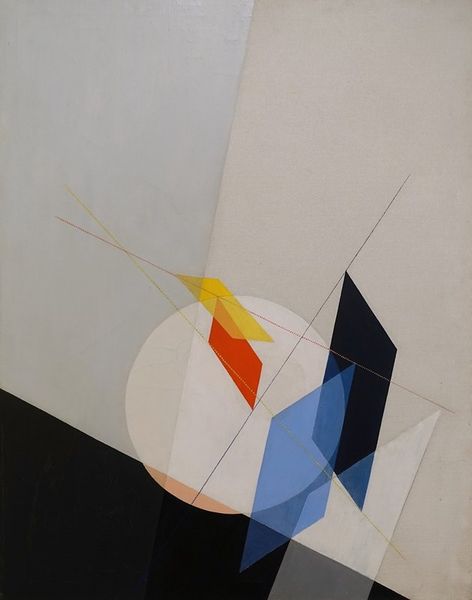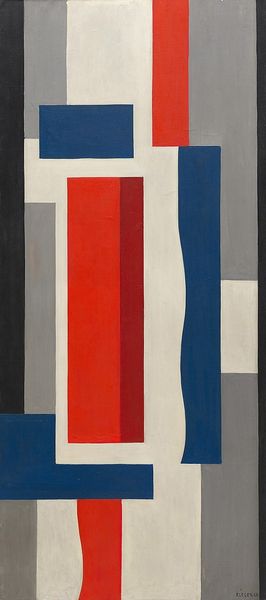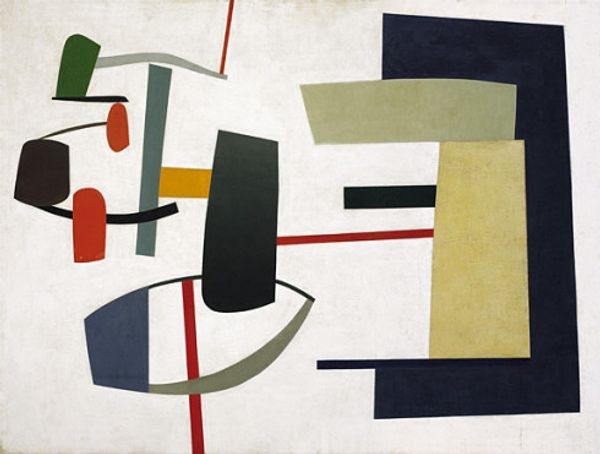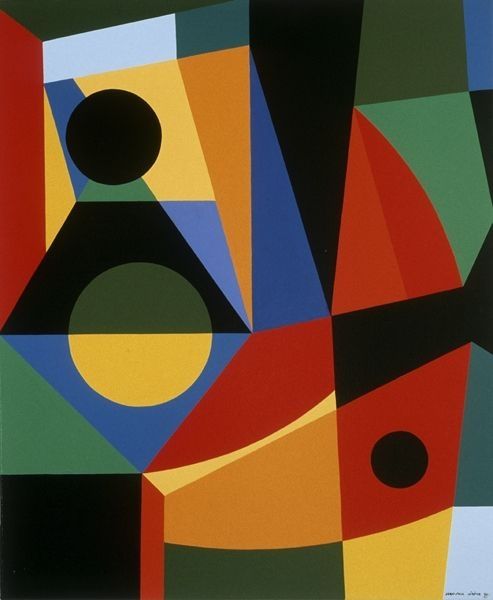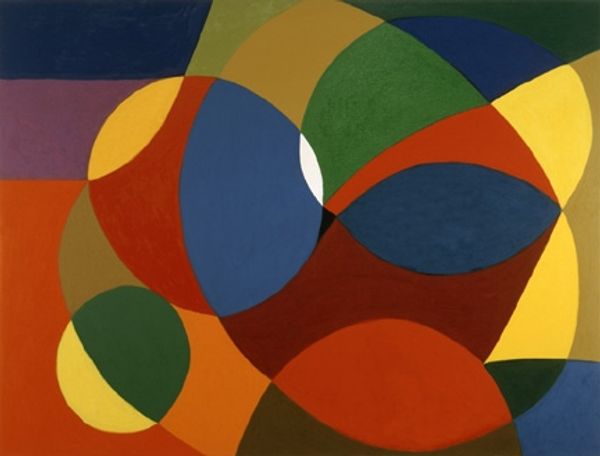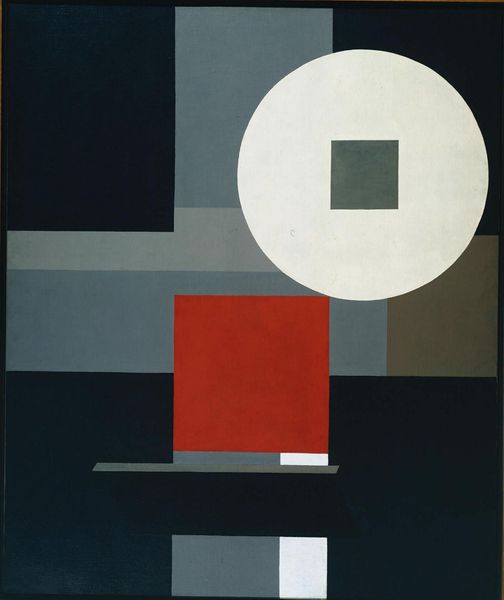
painting
#
non-objective-art
#
painting
#
constructivism
#
form
#
geometric
#
abstraction
#
line
#
modernism
Copyright: Public Domain: Artvee
Curator: This painting is entitled “Am 2,” completed in 1925 by László Moholy-Nagy. Editor: My immediate reaction is that it is a canvas of tightly interwoven energies – an insistent order trying to burst apart, somehow both severe and playful at once. Curator: Let's examine that interplay of order. Moholy-Nagy, deeply embedded in Constructivism, is rigorously exploring geometric form, line, and color. The painting embodies non-objective art—entirely free from representational concerns. Editor: And what emerges is a visual language where those circles, bars, and quadrants echo early machine age aspirations: clean, precise, perhaps a bit too optimistic about what that progress would really mean. Consider too that a circle, historically, often represents wholeness or unity. Its intersection with severe lines… is that a tension between humanism and industrialization? Curator: It's a crucial observation. Consider also the use of transparency. Those overlapping shapes modify how we see one another. It suggests layering, a depth that is at once material and illusory, achieved through subtle manipulations of paint. Semiotically, one might deconstruct the symbolism inherent in these shapes. Editor: Certainly the colors are significant. The black and white offer contrast while the flashes of primary hues suggest the optimism inherent in new technologies, maybe tinged with the anxieties surrounding a changing social fabric following the trauma of war. Even a tension regarding tradition itself is felt; that the dawn of abstraction has changed our reading of color, sign, symbol. Curator: Precisely! The visual elements function as signs within a complex structure. Through this interplay, Moholy-Nagy's formal investigation also opens up paths to broader meanings related to the era’s social transformations. Editor: So, “Am 2” seems to distill the promise and perhaps the premonition embedded in its historical moment. We can recognize its symbolic DNA even now. Curator: I find it rewarding how closely considering formal aspects unlocks an array of symbolic potentials within the work. Editor: Absolutely; considering those potential symbolic resonances alongside that tight structure, we have arrived somewhere meaningful together, I think.
Comments
No comments
Be the first to comment and join the conversation on the ultimate creative platform.
